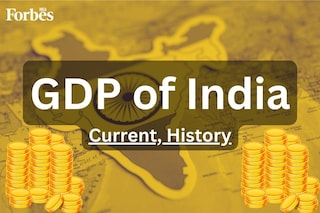GDP of India: Current and historical growth rate, India's rank in the world
Get insights into India's GDP in 2023. Learn about the economy's growth and potential as India propels itself towards a prosperous future


In the vast landscape of global economies, India stands out with its meteoric rise and unwavering determination to reach new heights. With its rich cultural heritage and a population of over 1.4 billion people, India has emerged as an economic powerhouse, consistently showcasing its prowess on the global stage. FY 2024 has proven to be a turning point as India"s GDP surges, solidifying its position as a frontrunner in the global economic race.
In this article, we unravel the intricacies of India"s GDP growth in 2024. We will delve into the numbers, explore the driving forces behind this remarkable achievement, and gain insights into the implications for India"s future.
MOSPI recorded that the Gross Value Added (GVA) grew by 7.2 percent in FY24 over 6.7 percent in 2022-23. In a press release, the government noted that the GVA growth was caused by 9.9 percent growth in the manufacturing sector and 7.1 percent growth in the mining sector in 2023-24.
Real GVA and GDP growth in Q4 have been estimated at 6.3 percent and 7.8 percent, respectively.
According to the press release, real GDP or GDP at Constant Prices is estimated to have attained a level of ₹173.82 lakh crore in FY24, against the First Revised Estimates (FRE) of GDP for FY23 of ₹160.71 lakh crore. The growth rate in Real GDP during FY24 is estimated at 8.2 percent compared to 7.0 percent in FY23. Nominal GDP or GDP at Current Prices is estimated to attain a level of ₹295.36 lakh crore in FY24, against ₹269.50 lakh crore in FY23, showing a growth rate of 9.6 percent.
If we look at the recent data from the International Monetary Fund (IMF), India’s GDP growth rate is higher than that of major economies such as Russia, the US, China, and Japan. In July 2024, the IMF raised India"s growth forecast for FY25 by 20 basis points to 7 percent. It made the rationalisation that better private consumption, especially in rural India, has led to a rise in the growth outlook. So now, as per the IMF:
The GDP growth rate is calculated by comparing the GDP of one period with the GDP of a previous period. It is expressed as a percentage and provides a measure of the country"s economic performance and overall economic health. If the GDP growth rate is positive, the economy is growing if it is negative, it is contracting or in recession.
First Published: Jul 17, 2024, 19:08
Subscribe Now